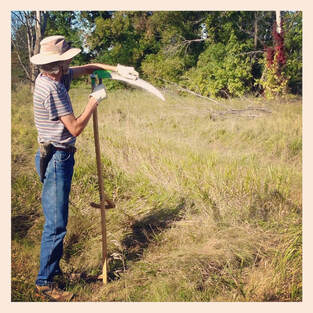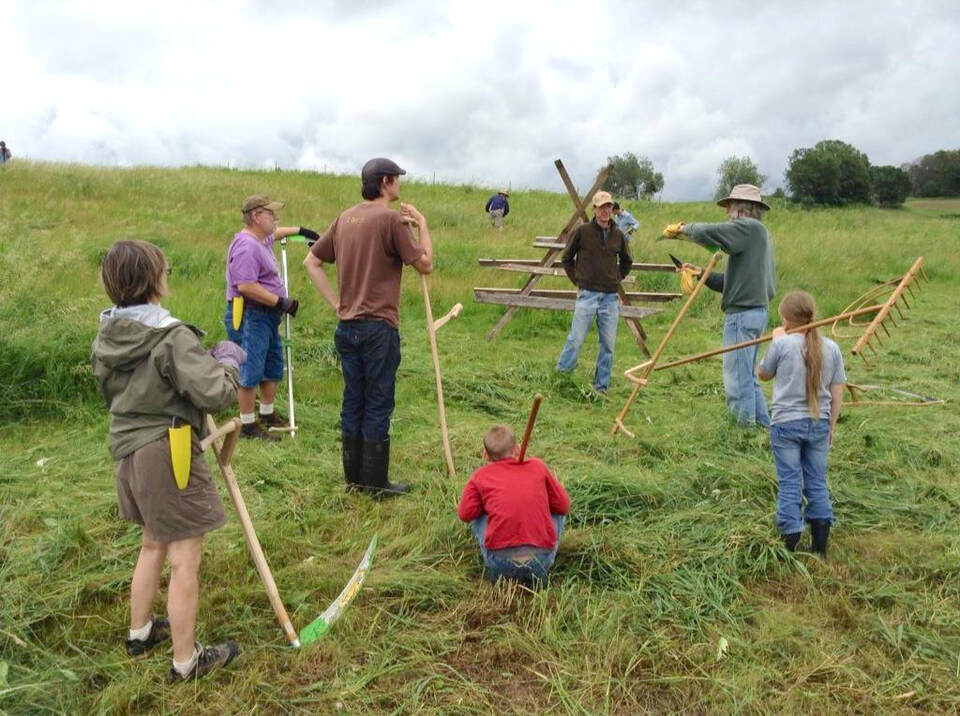First of all, if you bought your scythe blade from me, it is sharp and ready to go. No need to scrape off the paint from the edge. Doing so might damage the sharpness of the special, triple-peened edge. Also, if you're a beginner, there's no need to hone it before you use it. It's better to experience the sharpness as it is, first, before you practice honing. Wait until after you've mowed a while, and you start to feel that it's losing a bit of it's of sharpness, then try honing your blade. Use a medium-fine grit stone, like the Bergamo or Arctic Fox whetstone if you are a beginner. Before going out to mow, fill your whetstone holder half full with water, and then put your stone in it, and clip it to your belt. After mowing for some time, and you feel like the blade is losing it's "bite" or sharpness, try the honing technique shown in the video below:

Once again, start slow and develop a feel for the co-ordination required. Once you have the co-ordination down, you can do it faster. The faster you hone the more diagonal each stroke with the stone becomes. Eventually, once you have developed the coordination to hone quickly, you can alternate honing the edge and removing the burr with each stroke, as demonstrated at the end of my honing video. This alternating-stroke technique is especially useful with longer blades (75cm - 95cm or more).
I stop and hone every 5 minutes or so. It only takes about 30 seconds to touch-up the blade. (See video below.) The more often you do it, the more lightly you can hone, and/or the finer a grit you can use for a whetstone. It's more like maintaining the sharpness of edge then, rather than re-grinding the edge sharp, with the stone each time. People who are used to honing an unpeened scythe blade, will be used to having to hone really vigorously. This will be over-kill on your new grass blade. Keep a light touch, but with good contact, and let the stone do the work.
I stop and hone every 5 minutes or so. It only takes about 30 seconds to touch-up the blade. (See video below.) The more often you do it, the more lightly you can hone, and/or the finer a grit you can use for a whetstone. It's more like maintaining the sharpness of edge then, rather than re-grinding the edge sharp, with the stone each time. People who are used to honing an unpeened scythe blade, will be used to having to hone really vigorously. This will be over-kill on your new grass blade. Keep a light touch, but with good contact, and let the stone do the work.
1SR SCYTHE WORKSHOP 2011: HONING THE BLADE
For more info on honing, see honing question in my blog.

